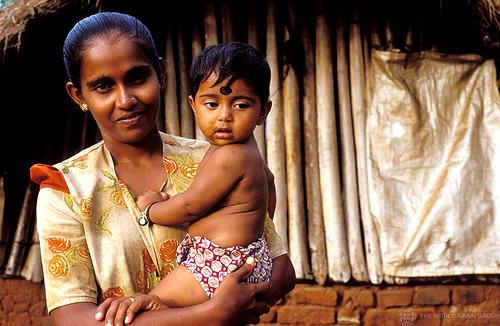Can Weather Index Insurance Increase Finance for Smallholder Farmers?

Smallholder farmers need finance. According to a recent report of 1,800 banks conducted by the Initiative for Smallholder Finance – “Local Bank Financing for Smallholder Farmers: A $9 Billion Drop in the Ocean” - local banks in developing countries are currently lending approximately $9 billion to smallholder farmers compared to a total estimated demand of $300 billion globally for smallholder finance ($450 billion if China is included). Although smallholder farmer financing also occurs through MFIs and non- financial intermediaries like supply chain participants, cooperatives and moneylenders, this is a notable gap in available bank financing.
There are 450-500 million smallholder farmer households (2.5 billion people) in the world, and many smallholder farmers live on less than $2 a day. Figuring out their financial needs is a challenge. Financial institutions have traditionally been reluctant to lend to smallholder farmers as the loan amounts are small, and default risks are high due to a variety of factors such as small land holdings, weak value chains, and increasingly adverse weather. Weather has always been one of the biggest risks that farmers face, and it is increasing in severity due to climate change.
A variety of innovative risk management instruments are springing up to increase bank and MFI lending to smallholders such as flexible repayment terms linked to crop cycles and the use of mobile technology to distribute finance and collect loan repayment. But with severe weather on the rise globally, insurance is one of the essential tools to help farmers recover quickly after harvests fail due to adverse weather, and enable financial lenders to secure their loans.
If well designed, index insurance may be an important instrument to increase finance to the smallholder farmer sector. Some banks and MFIs may accept insurance as partial collateral for loans and hence increase their lending. Index insurance pays out benefits directly to farmers on the basis of parametric triggers (eg. rainfall levels), without requiring traditional resource intensive insurance claim assessment. It is ideally suited to the needs of smallholder farmers.
As Aaltje de Roos, Senior Policy Advisor to the Netherlands Ministry of Foreign Affairs, noted: “The beauty of agri-index insurance is that it can cover small investments, such as the Syngenta Foundation’s work in Africa through its Kilimo Salama insurance initiative which allows farmers to insure inputs only. Farmers can afford to insure a bag of seeds which is a low-cost investment up front and allows time to build farmers’ trust in the index insurance sector.”
It will take time to train staff of lending financial institutions in developing countries on the specific financial needs of farmers and index insurance products. IFC country offices in Sub-Saharan Africa are working with financial institutions to expand their agricultural portfolios but the best bet short term for expanding financial services and insurance to smallholder farmers may be nontraditional players such as the agribusiness sector.
Dave Chalila, Senior Financial Specialist at IFC/Sub-Saharan Africa region, noted “In Sub-Saharan Africa, it is common practice for smallholder farmers to receive credit from agribusiness companies through the provision of inputs and services. IFC needs to recognize that efforts to increase access to finance should focus on both traditional financial services providers, such as banks and microfinance institutions, as well as non-traditional players. In the short term, agri-businesses offer promising opportunities for insurance products because of the larger number of farmers within their supply chains. For example, Ecom Trading is a marketing agent for almost 400,000 coffee farmers in Kenya, and weather index insurance would benefit both the agribusiness firm and its coffee farmers.
